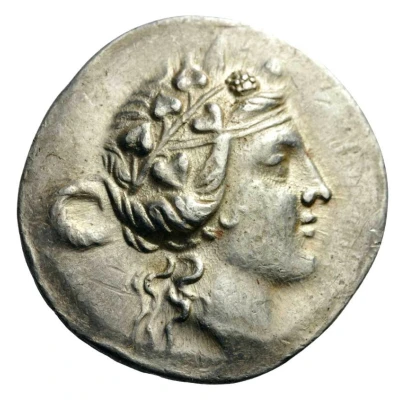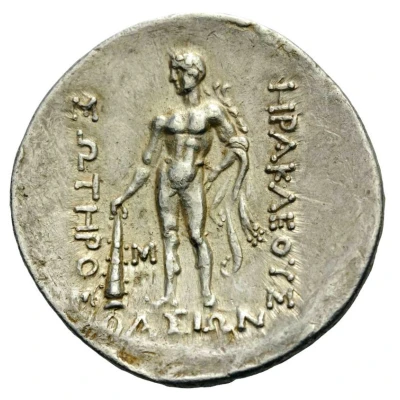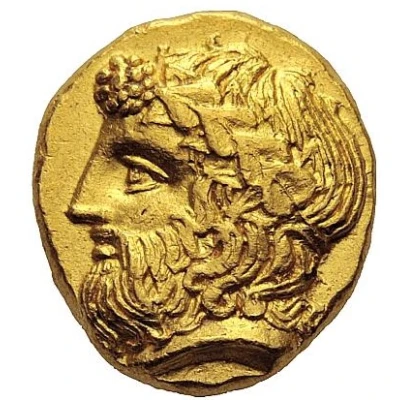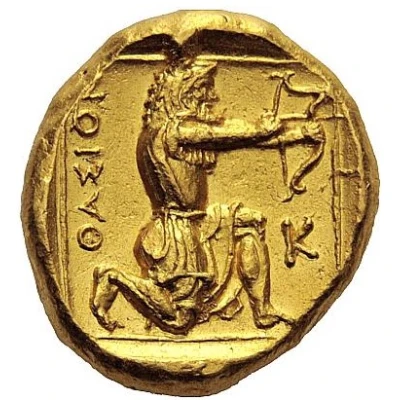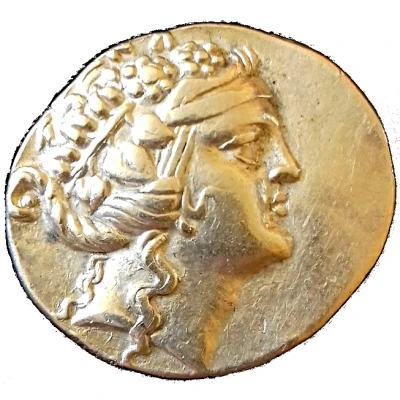
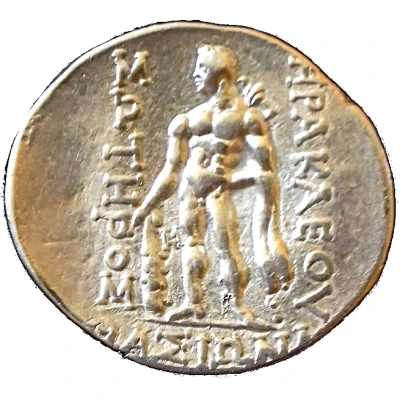

© EPHESE
Tetradrachm 145 BC - 130 BC
| Silver | 16.88 g | 25 mm |
| Issuer | Thasos (Thracian Islands) |
|---|---|
| Type | Standard circulation coin |
| Years | 145 BC - 130 BC |
| Value | 1 Tetradrachm (4) |
| Currency | Drachm |
| Composition | Silver |
| Weight | 16.88 g |
| Diameter | 25 mm |
| Shape | Round (irregular) |
| Technique | Hammered |
| Demonetized | Yes |
| Updated | 2024-10-10 |
| Numista | N#95841 |
|---|---|
| Rarity index | 87% |
Reverse
Herakles standing facing, naked, head left, holding club and lion skin
Script: Greek
Lettering:
ΗΡΑΚΛΕΟΥΣ
ΣΩΤHΡΟΣ
ΘΑΣΙΩΝ
Comment
The new coinage began after the defeat of Antriscus in 148 B.C. and the reorganization of Macedonia as a Roman province, and lasted until the beginning of the first century B.C. For Maronea, E Shonert-Geiss dates the beginning of coinage to 189 B.C. Thrace possessed important silver mines, the production of which was used to manufacture the Tetradrachms of Thasos and Maronea.These large silver coins all depicted two or three youthful portraits of DIONYSOS and, on the reverse, full-length Dionysus for Maronea and HERCULUS for Thasos, the heroes of these two cities.
The monograms on the reverse must represent the initials of monetary magistrates in charge of checking coins (photo 2).THASOS coins were imitated by the Danube Celts.
THRACE - THRACIAN ISLANDS - THASOS
(2nd - 1st century BC).
Thasos was settled by Ionians from Paros and was also visited by Phoenician sailors. The Sintian tribe had previously occupied the island. The wealth of Thasos was proverbial, thanks to the gold and silver mines of the island and neighboring Pangaea, which, according to Herodian (VI, 46), provided 200 to 300 talents of annual income. During Thrace's revolt against the Persian Empire in 498 BC, Darius I (521-486 AC.) sought to impose his rule on the city. After the Median Wars, Thasos joined the Athenian alliance, and the proceeds from the mines were diverted first to the League of Delos, then directly to Athens. In 411 BC, Thasos revolted and drove out the Athenians, who were immediately replaced by a Spartan garrison. After 357 BC, Thasos fell under Macedonian rule. It regained some of its independence with the death of Lysimachus in 281 BC. After the defeat of Cynoscephalus in 197 BC, Thasos regained its autonomy. From 148 or 146 B.C., the Roman Senate authorized Thasos and Maronea to coin wide-flank tetradrachms, which were minted in very large quantities and imitated in the Balkans until the end of the 1st century B.C.
Dionysus holding the thyrseus in one hand
Bas-relief from Herculaneum (Naples Museum).
The god is depicted here as an ephebe.
Interesting fact
The obverse (front) side of the coin features a portrait of the Greek goddess Athena, while the reverse (back) side depicts a shield with the letter "theta" (θ) inside, which represents the city of Thasos. This design was used to indicate the coin's origin and to show the city's connection to the Greek world.
